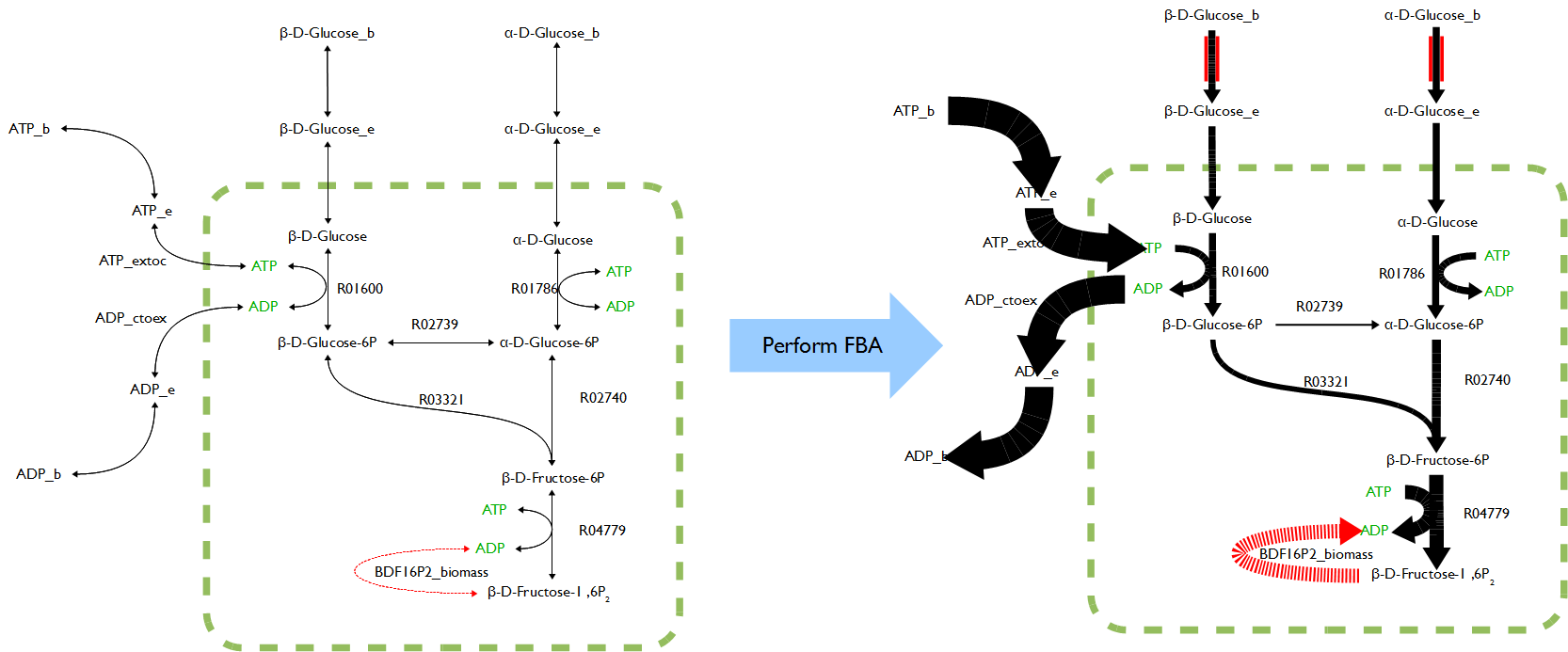Team:Calgary/Notebook/FluxAnalysis
From 2012.igem.org
(Difference between revisions)
| Line 6: | Line 6: | ||
</html> | </html> | ||
| + | <h2>Week 1 (May 1-4)</h2> | ||
| + | <p>Refer to Hydrocarbon Modelling Part [https://2012.igem.org/wiki/index.php?title=Team:Calgary/Notebook/Hydrocarbon]</p> | ||
| - | |||
| - | |||
<h2>Week 4 (May 22-25)</h2> | <h2>Week 4 (May 22-25)</h2> | ||
<h3>Concepts</h3> | <h3>Concepts</h3> | ||
| Line 14: | Line 14: | ||
<p>Flux balance analysis (FBA) is a mathematical method for analyzing metabolism. It is a direct application of linear programming to biological systems that uses the stoichiometric coefficients for each reaction in the system as the set of constraints for the optimization.</p> | <p>Flux balance analysis (FBA) is a mathematical method for analyzing metabolism. It is a direct application of linear programming to biological systems that uses the stoichiometric coefficients for each reaction in the system as the set of constraints for the optimization.</p> | ||
[[File:UCalgary 2012 FBAEx.png|thumb|600px|center|The results of FBA on a prepared metabolic network of the top six reactions of glycolysis. The predicted flux through each reaction is proportional to the width of the line. Objective function in red, constraints on alpha-D-Glucose and beta-D-Glucose import represented as red bars. Original: Wikipedia]] | [[File:UCalgary 2012 FBAEx.png|thumb|600px|center|The results of FBA on a prepared metabolic network of the top six reactions of glycolysis. The predicted flux through each reaction is proportional to the width of the line. Objective function in red, constraints on alpha-D-Glucose and beta-D-Glucose import represented as red bars. Original: Wikipedia]] | ||
| - | + | <h5>The Steady State Assumption</h5> | |
| - | + | <p>In chemistry, a steady state is a situation in which all state variables are constant in spite of ongoing processes that strive to change them. For an entire system to be at steady state</p> | |
<h4> Extended Flux Analysis</h4> | <h4> Extended Flux Analysis</h4> | ||
<h4>Metabolic Network Reconstruction</h4> | <h4>Metabolic Network Reconstruction</h4> | ||
Revision as of 21:36, 1 June 2012
Contents |
Week 1 (May 1-4)
Refer to Hydrocarbon Modelling Part [1]
Week 4 (May 22-25)
Concepts
Flux Balance Analysis (FBA)
Flux balance analysis (FBA) is a mathematical method for analyzing metabolism. It is a direct application of linear programming to biological systems that uses the stoichiometric coefficients for each reaction in the system as the set of constraints for the optimization.

The results of FBA on a prepared metabolic network of the top six reactions of glycolysis. The predicted flux through each reaction is proportional to the width of the line. Objective function in red, constraints on alpha-D-Glucose and beta-D-Glucose import represented as red bars. Original: Wikipedia
The Steady State Assumption
In chemistry, a steady state is a situation in which all state variables are constant in spite of ongoing processes that strive to change them. For an entire system to be at steady state
 "
"